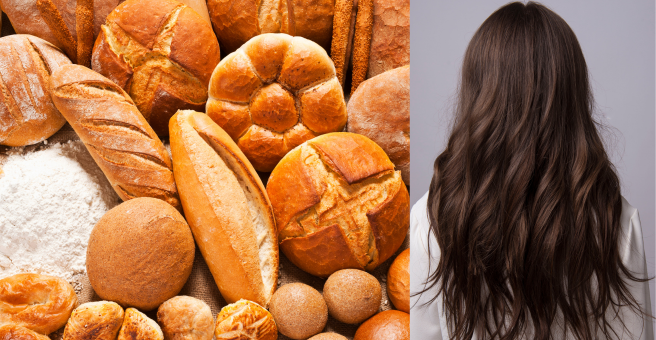Is Human Hair In Bread
A study from 2016 about consumer staples have unveiled a myriad of unexpected ingredients and practices embedded within everyday products. From supermarket bread to ice cream and cosmetics, a spectrum of unexpected components has surfaced, shaking up perceptions of what we consume daily. The 2016 study is now going viral with revelations that human hair may be used in bread.
Commissioned by Privilege insurance, researchers delved into the core of consumer favorites, unearthing secrets spanning across food, beverages, retail, and cosmetics. The findings, unveiled after two months of intensive investigation, shine a light on elements hidden within everyday products that have left consumers astounded.

Do They Use Human Hair In Bread
One startling revelation is the presence of L-Cysteine, an amino acid employed to extend the shelf life of commercial bread, sourced from human hair. Most notably sourced from barbershops and hair salons in Asia, this practice has sparked concern among consumers. The hair-derived ingredient, while a common additive in commercial supermarket breads, can be avoided by opting for fresh bread from local bakeries, as it is not a prevalent additive in flour.
The shocking discovery, though recently gaining viral attention, traces back to a lesser-known study published in 2016. The synthesis of amino acids like L-Cysteine from human hair has stirred discomfort among consumers, particularly those seeking transparency and clarity regarding the contents of their daily food choices.
Is There Human Hair in Store Bought Bread
Consumers seeking to bypass this unsettling ingredient in their bread choices have been advised to opt for bread from local bakers, thus avoiding the additives present in commercial variants. Fast-food establishments, often utilizing these additives, stand as potential sources of products containing L-Cysteine.
Dan Simson, head of Privilege Insurance, highlighted the importance of transparency in consumer products, emphasizing the need for informed choices. “It is paramount that the consumer has all the facts so they can make a logical and sensible choice about the products they are buying,” stated Simson.
As these revelations continue to surface, the call for more transparent labeling and consumer awareness amplifies, prompting a reassessment of the products that find their way into daily consumption. The exploration of what lies behind the labels underscores the necessity for informed decision-making and reinforces the need for transparency within the consumer goods industry.
Published by HOLR Magazine.


